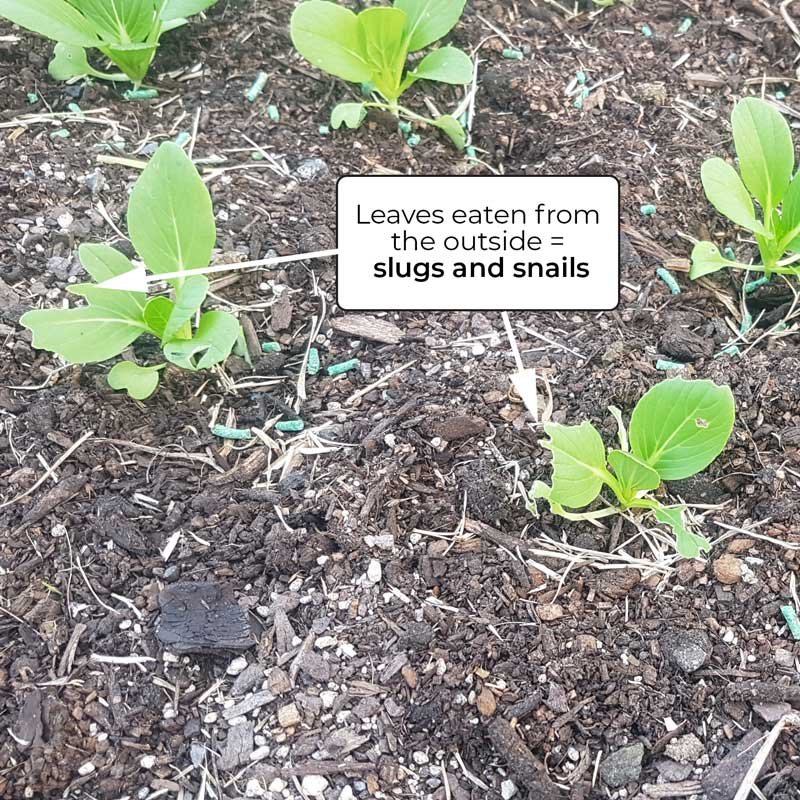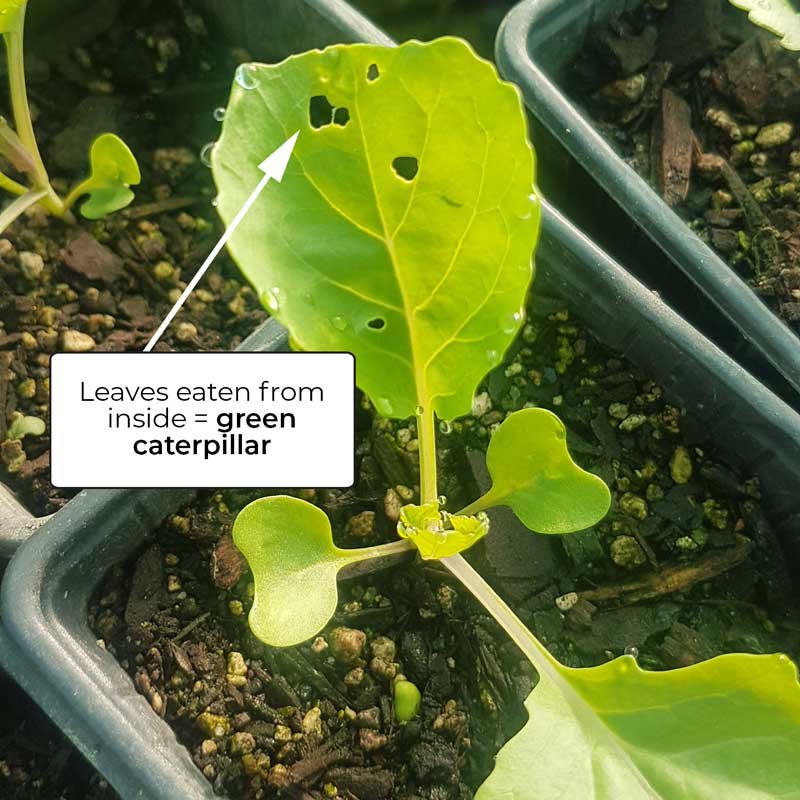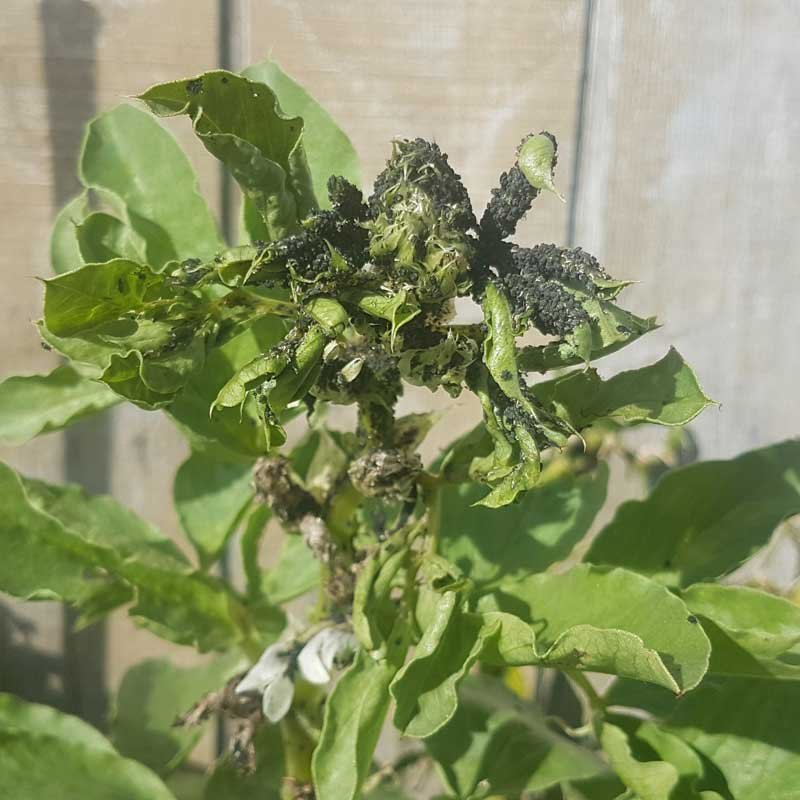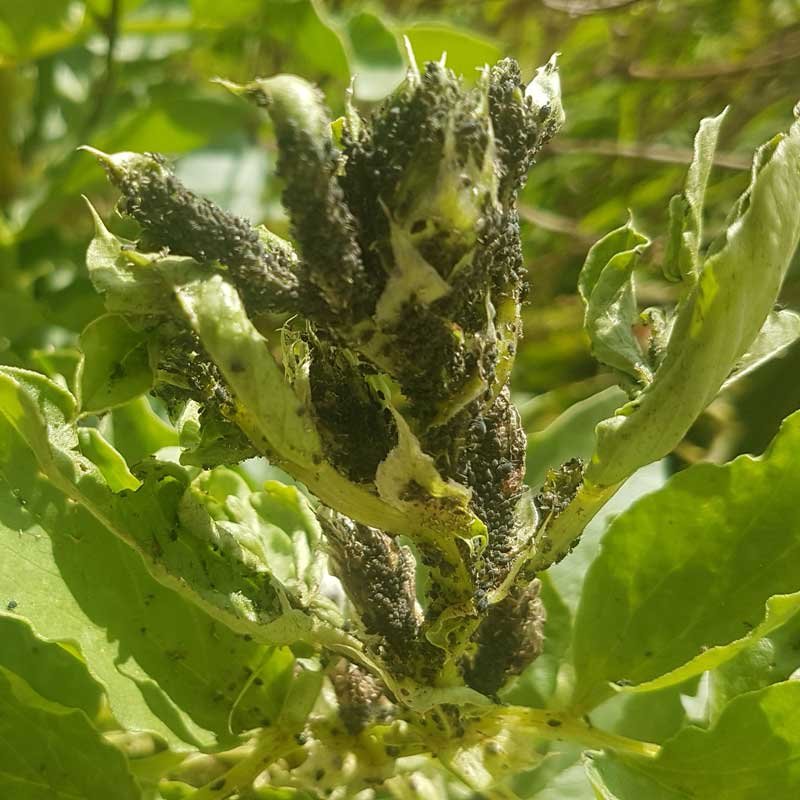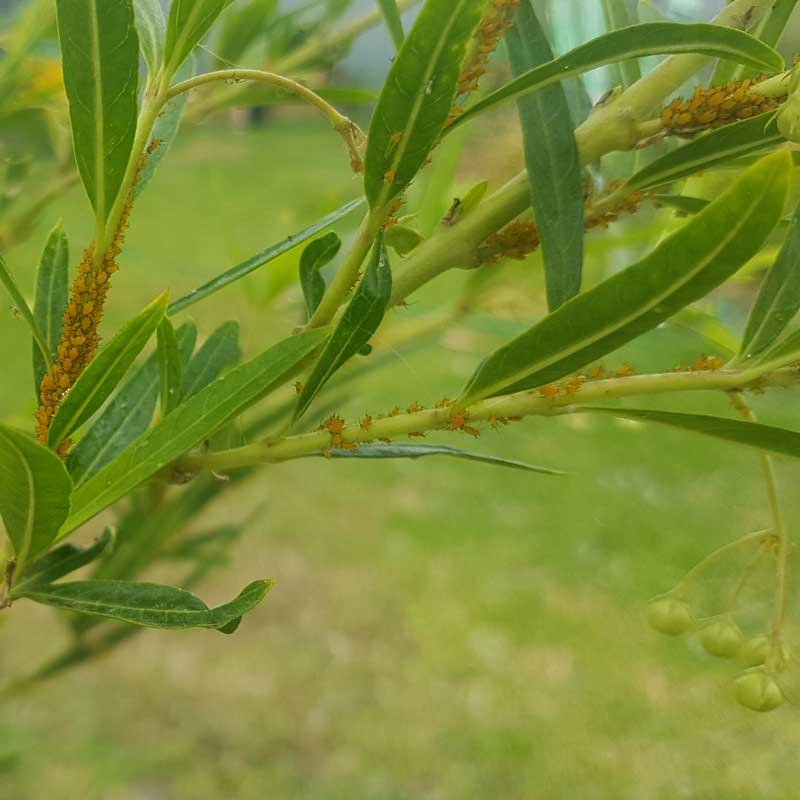Many of us now find ourselves in a position where if you have a problem, and the solution isn’t in your house, too bad. We’re locked in. You can’t buy the answer.
There’s no hardware store to pop down to. There’s no garden centre or aisle of solutions. If you are lucky enough to have snail bait, BT, or insect netting sitting on the shelves of your gardening shed, you’re good. But if not, you may be finding your garden hammered by all kinds of garden pests.
Some of these things are usually on the shelves of your supermarket, but do we honestly know what’s going to be on the shelf of our supermarket these days?
Having been asked these questions a couple of times now, I thought this week I’d talk about what you can do to control pests under level 4 restrictions. Many of these are kid-friendly, so if you’re a parent searching for things to keep your kids busy, read on.
What’s your pest?
To choose a control method, you need to work out what kind of pest you have. Here’s how I identify the common pests in my garden right now.
(Click the images to expand).
If the leaves are being eaten from the outside > in, or your seedlings disappear overnight, you probably have slugs and/or snails.
If the leaves are being eaten from the inside > out, leaving small holes, you probably have green caterpillar.
If you have a black, sooty substance collecting on the plant, and lots of small black, orange, white or red insects, you probably have aphids.
Manual control
The most straight-forward and effective way to rid yourself of most pests is to go and pick them off, or squash them with your hands. If you’ve got them, I recommend gardening gloves for this. Tongs or chopsticks might also be helpful.
For slugs and snails, go out an hour or two after dark. Take a torch and a lidded-jar of soapy water. Pick off the slimy bastards and plonk them in the jar. Check under leaves. The soap and the lid will stop them crawling out the sides of your jar.
For green caterpillars, the moment you see holes in your leaves, run your fingers over the underside to squash them. Keep an eye out for eggs underneath leaves (shown below) on nearby plants and squash them too.
Green vegetable bugs can be drowned like slugs and snails (shown above), but best to do it an hour or two after the sun hits your garden. They seem to like to sunbathe. Don’t squash them as the stink they let off will tell all the others to hide.
Aphids can be squashed. Run your fingers over the plant and just squash them all.
Other control methods
Some of these methods are more unusual than others. Their effectiveness may vary. They also require you to have some sort of equipment at home. I’ve collected as many as I can that use the most common of ingredients in order to give you some choices.
Slugs and snails
An upside-down pot will provide refuge for your slugs and snails during the day. Go out at your leisure, turn over the pot, and drown any who have chosen to hide there in soapy water (as talked about under ‘manual control’). Place a few pots around the garden. Bowls will probably work as well.
Coffee grounds and broken eggshells sprinkled around your plant in quite heavy amounts will reportedly deter them. Dry your eggshells in the oven on the lowest temperature for an hour first. You’ll need quite a lot. They don’t like the jagged qualities of the eggshells, but I don’t know why coffee might work.
If you’re lighting the fire already, apparently a circle of the ashes around your plant is an effective deterrent, They’ll need to be refreshed after rain though. This will affect the pH of your soil if done too often and that will affect how future crops grow, so be careful with this one.
A beer trap may catch a few (instructions here). Yeast with some sugar and flour in warm water may work too (instructions here). You’d have to be willing to give up some beer or yeast though, and most people who I’ve talked to don’t have much success with this method. If you do try it, place your traps on the edges of your garden – before they reach your plants.
Salt will basically melt slugs by absorbing the moisture from their skin as they move over it. It will also kill your plants. But if you have a lot of salt, and maybe some paved areas you can use to put a barrier on, this might help reduce the population.
Green caterpillar
The green caterpillars munching into your brassicas come from white butterflies. Apparently, butterflies are territorial and won’t go into another butterfly’s patch. I don’t know if this works, but one method I’ve seen is to make decoy butterflies (instructions here). If you try this, I’d love to know how it goes.
If you’ve got some fresh or dried chilies – or even a hot chili sauce – you can try making a chili spray (instructions here). The caterpillars don’t like their leaves spicy. Make sure to spray under the leaves as that’s where they eat from. You’ll need to reapply after rain.
Based on a similar principle, and one I’ve started using myself this week, is a garlic spray (instructions here). Again, reapplication after rain will be required. Companion planting garlic (or onions, or spring onions) near your vulnerable crops may help too.
Green vegetable/stink bug
It pays to learn what this one looks like at different stages of its lifecycle. To the untrained eye, juveniles can look like a ladybug. Here’s a great guide to get to know them from Landcare research.
It’s possible the chili spray mentioned above might deter them, but you’re going to have to drench every plant in your garden as it is only a deterrent.
As the temperatures are dropping, I’m noticing the numbers are dropping off. This is good, because most of the controls I came up with need a trip to the garden centre. If you happen to have it, neem oil looks like it might work. Derris dust, or products with pyrethrum might work too.
If you don’t have those, manual control is your best bet.
Aphids
Aphids will suck the life out of your plant, but they’re not very hardy. You can spray them off with a hose (unless you are also under water restrictions, I guess).
Aphids don’t seem to like garlic much either. You can give the garlic spray mentioned above a try. Or companion planting onions, spring onions, or garlic near problem crops might work too.
Number 8 wire attitude
Do remember we’re a nation of creative thinkers. We’ve spent years filling our houses with stuff and things. We might be stuck at home, but we’ve got the internet, our brains, and quite a lot of time at our disposal.
Gardening was possible before garden stores existed, it is possible now. It might just take a little more of that time.
Like always, if you have any gardening questions throughout the pandemic, let me know, and I’ll see what I can come up with to help.
Pandemic Growing Guides
During the COVID-19 pandemic and lockdown, I'll be writing a pandemic-themed growing blog every week. Here's a handy list of what's been published so far if you'd like to catch up:




